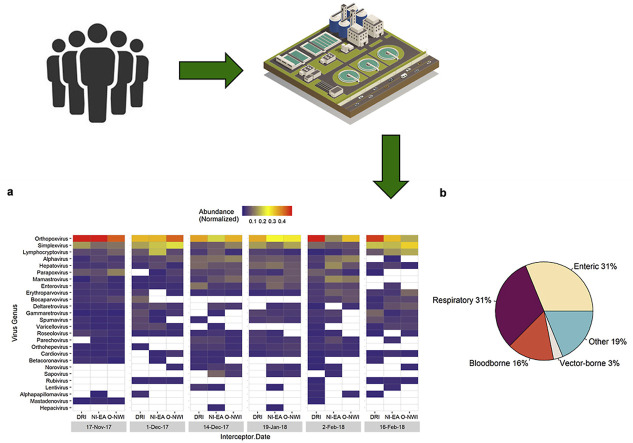Summary Background Global development goals increasingly rely on country-specific estimates for benchmarking a nation's progress. To meet this need, the Global Burden of Diseases, Injuries, and Risk Factors Study (GBD) 2016 estimated global, regional, national, and, for selected locations, subnational cause-specific mortality beginning in the year 1980. Here we report an update to that study, making use of newly available data and improved methods. GBD 2017 provides a comprehensive assessment of cause-specific mortality for 282 causes in 195 countries and territories from 1980 to 2017. Methods The causes of death database is composed of vital registration (VR), verbal autopsy (VA), registry, survey, police, and surveillance data. GBD 2017 added ten VA studies, 127 country-years of VR data, 502 cancer-registry country-years, and an additional surveillance country-year. Expansions of the GBD cause of death hierarchy resulted in 18 additional causes estimated for GBD 2017. Newly available data led to subnational estimates for five additional countries—Ethiopia, Iran, New Zealand, Norway, and Russia. Deaths assigned International Classification of Diseases (ICD) codes for non-specific, implausible, or intermediate causes of death were reassigned to underlying causes by redistribution algorithms that were incorporated into uncertainty estimation. We used statistical modelling tools developed for GBD, including the Cause of Death Ensemble model (CODEm), to generate cause fractions and cause-specific death rates for each location, year, age, and sex. Instead of using UN estimates as in previous versions, GBD 2017 independently estimated population size and fertility rate for all locations. Years of life lost (YLLs) were then calculated as the sum of each death multiplied by the standard life expectancy at each age. All rates reported here are age-standardised. Findings At the broadest grouping of causes of death (Level 1), non-communicable diseases (NCDs) comprised the greatest fraction of deaths, contributing to 73·4% (95% uncertainty interval [UI] 72·5–74·1) of total deaths in 2017, while communicable, maternal, neonatal, and nutritional (CMNN) causes accounted for 18·6% (17·9–19·6), and injuries 8·0% (7·7–8·2). Total numbers of deaths from NCD causes increased from 2007 to 2017 by 22·7% (21·5–23·9), representing an additional 7·61 million (7·20–8·01) deaths estimated in 2017 versus 2007. The death rate from NCDs decreased globally by 7·9% (7·0–8·8). The number of deaths for CMNN causes decreased by 22·2% (20·0–24·0) and the death rate by 31·8% (30·1–33·3). Total deaths from injuries increased by 2·3% (0·5–4·0) between 2007 and 2017, and the death rate from injuries decreased by 13·7% (12·2–15·1) to 57·9 deaths (55·9–59·2) per 100 000 in 2017. Deaths from substance use disorders also increased, rising from 284 000 deaths (268 000–289 000) globally in 2007 to 352 000 (334 000–363 000) in 2017. Between 2007 and 2017, total deaths from conflict and terrorism increased by 118·0% (88·8–148·6). A greater reduction in total deaths and death rates was observed for some CMNN causes among children younger than 5 years than for older adults, such as a 36·4% (32·2–40·6) reduction in deaths from lower respiratory infections for children younger than 5 years compared with a 33·6% (31·2–36·1) increase in adults older than 70 years. Globally, the number of deaths was greater for men than for women at most ages in 2017, except at ages older than 85 years. Trends in global YLLs reflect an epidemiological transition, with decreases in total YLLs from enteric infections, respiratory infections and tuberculosis, and maternal and neonatal disorders between 1990 and 2017; these were generally greater in magnitude at the lowest levels of the Socio-demographic Index (SDI). At the same time, there were large increases in YLLs from neoplasms and cardiovascular diseases. YLL rates decreased across the five leading Level 2 causes in all SDI quintiles. The leading causes of YLLs in 1990—neonatal disorders, lower respiratory infections, and diarrhoeal diseases—were ranked second, fourth, and fifth, in 2017. Meanwhile, estimated YLLs increased for ischaemic heart disease (ranked first in 2017) and stroke (ranked third), even though YLL rates decreased. Population growth contributed to increased total deaths across the 20 leading Level 2 causes of mortality between 2007 and 2017. Decreases in the cause-specific mortality rate reduced the effect of population growth for all but three causes: substance use disorders, neurological disorders, and skin and subcutaneous diseases. Interpretation Improvements in global health have been unevenly distributed among populations. Deaths due to injuries, substance use disorders, armed conflict and terrorism, neoplasms, and cardiovascular disease are expanding threats to global health. For causes of death such as lower respiratory and enteric infections, more rapid progress occurred for children than for the oldest adults, and there is continuing disparity in mortality rates by sex across age groups. Reductions in the death rate of some common diseases are themselves slowing or have ceased, primarily for NCDs, and the death rate for selected causes has increased in the past decade. Funding Bill & Melinda Gates Foundation.




